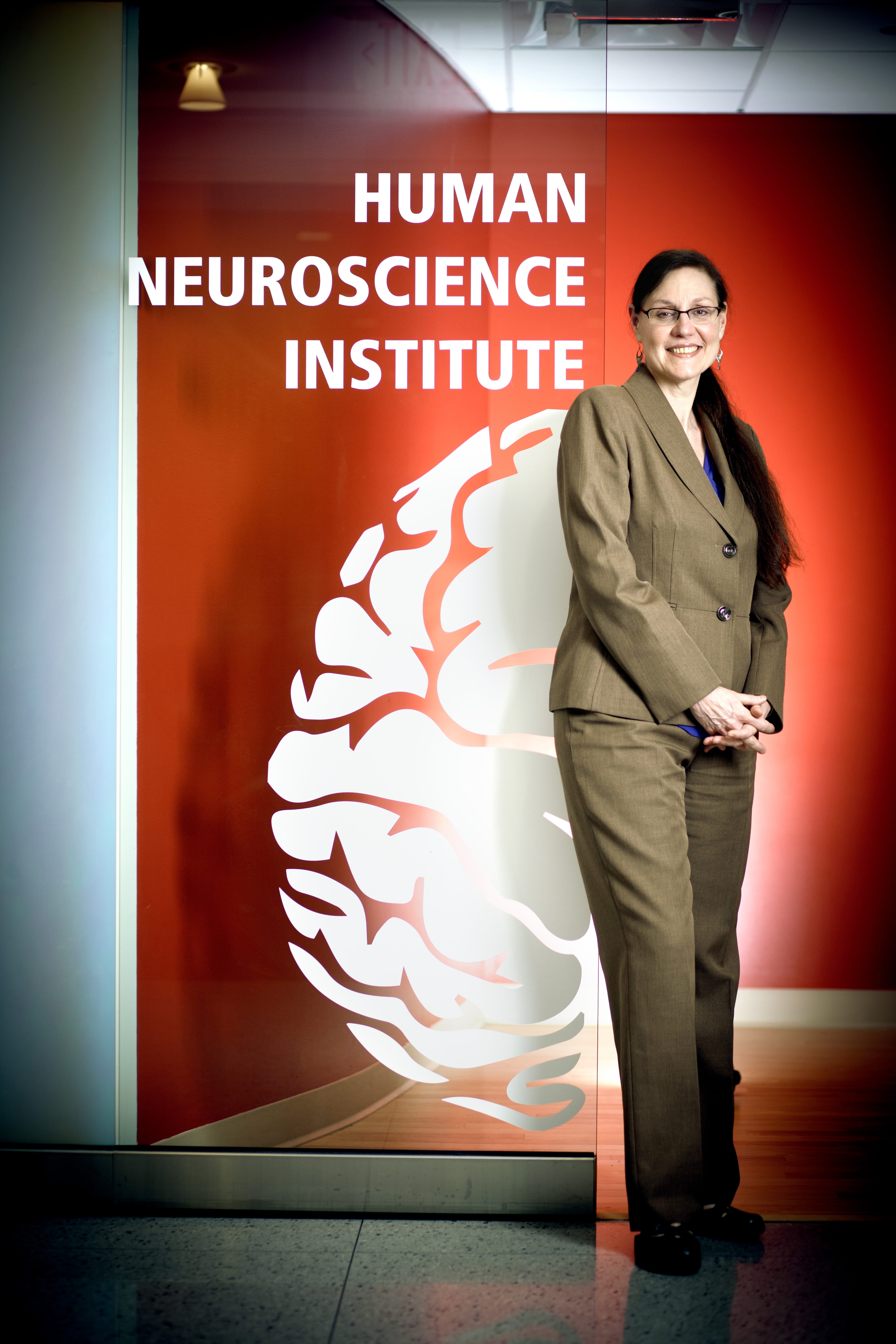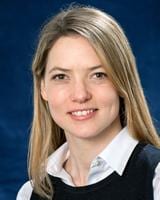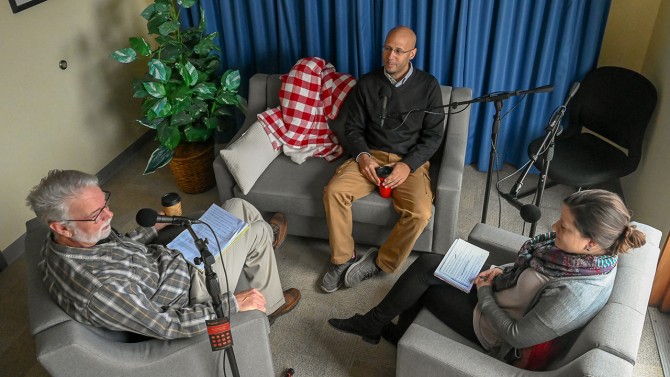There are 5 playlists in the Human Development Video Library. Click the icon in the upper right corner of the video player to see the complete list of videos in each playlist.
Multimedia
Listen Notes – HD faculty podcasts
Listen to the HD Today e-NEWS Listen Notes playlists of podcasts featuring HD faculty interviews.
Anthony Burrow explains how 4-H can foster identity and purpose
Anthony Burrow, Professor in the Department of Human Development and co-director of the Bronfenbrenner Center for Translational Research’s Program for Research on Youth Development and Engagement (PRYDE), was interviewed for the podcast "Extension Out Loud." The podcast, along with podcasts of other HD faculty, can be found on the HD Today e-NEWS Soundcloud webpage - click here. Read more below about how PRYDE supports 4-H programs and contributes to positive youth development.
Cornell Chronicle, March 14, 2019
by R.J. Anderson
How can exploring identity and sense of purpose help young people get more out of programs such as 4-H?
In the latest episode of Cornell Cooperative Extension’s “Extension Out Loud” podcast, Anthony Burrow, associate professor of human development in the College of Human Ecology, shares his research on the benefits of helping youth think about long-term personal goals and self-identifying “their why” prior to introducing programming.
Burrow, co-director of the Bronfenbrenner Center for Translational Research’s Program for Research on Youth Development and Engagement (PRYDE), suggested that before program leaders kick off activities, they lead youth participants through a series of exercises designed to identify long-term goals and prompt them to examine their future selves. Tapping into this perspective can give programming more meaning and help youth stay focused.
A sense of purpose can also be a weapon against negative or overreactions in their daily lives.
“We’ve often thought of purpose as a sort of protection against negative experiences or stressors,” said Burrow, recipient of the 2019 Engaged Scholar Prize administered by the Office of Engagement Initiatives. “So on days when challenges happen or negative events or negative experiences happen, might having a sense of purpose help people react less negatively to those experiences?”
During the 33-minute episode, co-hosted by CCE staff members Katie Baildon and Paul Treadwell, Burrow covers an array of topics, including:
- The need to provide youth and adults with safe spaces where they can experiment with different identities to develop purpose, for which 4-H is a great vehicle, Burrow said.
- How Burrow’s lab has observed the benefits of social media and exploring how it can be a place where youth are exposed to ideas and experiences and can make observations that could not otherwise happen. In his research, Burrow finds having a sense of purpose in life can stave off heightened affective or emotional reactivity to something as simple receiving (or not receiving) a thumbs-up on a social media selfie.
- How while there is a lot of wonderful development happening through programs and clubs, particularly 4‑H, delivery of those programs and the impacts they are having often go understudied or unexamined. “There’s this gap between the research that’s relevant to youth and the good work that’s happening in communities,” he said. “PRYDE was born out of an attempt to create some infrastructure to bring these two crowds together.”
Full episodes of “Extension Out Loud,” including descriptions and transcripts of each episode, can be found online. Episodes can also be streamed on iTunes and SoundCloud.
R.J. Anderson is a writer/communications specialist with Cornell Cooperative Extension.
Advancing science communication through Fuzzy-Trace Theory
John Eckenrode – What is translational research?
Bronfenbrenner Center for Translational Research's podcast series, "Doing Translational Research," May 2, 2018
It's our 20th episode! This seemed like a good moment to address a question we often hear: What is translational research?
To tackle this important question Karl is joined by BCTR associate director John Eckenrode. They cover the origins of translational research, and how it differs from "basic" and "applied" research. There are some examples of translational research projects and throughout the conversation they touch on why this research method is so effective and more and more in-demand by funders, policymakers and practitioners.
John Eckenrode is a social psychologist and professor of human development and associate director of the Bronfenbrenner Center for Translational Research. He is also founder and co-director of the National Data Archive of Child Abuse and Neglect. His research concerns child abuse and neglect, the effects of preventive interventions, translational research, and stress and coping processes.
A Triangular Theory of Love
Robert Sternberg was interviewed on October 9, 2018 for the podcast, What Makes Us Human? from Cornell University's College of Arts & Sciences. This is the podcast's third season, "What Do We Know About Love?" and Dr. Sternberg discusses his "Triangular Theory of Love."
I became interested in love when I was in a failing relationship (regrettably, one of several in my lifetime). I wondered what was wrong. I thought back to some of the relationships in my life I would have labeled at one time or another as “loving.”
The first was with a little girl I’ll call Joan, when I was in early elementary school. We could talk about anything. We even planned to be King and Queen of the world, and everyone except us would have to go around naked. We communicated well, cared about each other, felt like we could count on each other. In sum, Joan and I were truly intimate with each other, although of course strictly in a Platonic sense. After all, we were just 5 years old at the time!
The second relationship was with Jane (also not her real name). I saw Jane sitting in front of me in high school biology class and immediately fell head over heels for her. That year of school I obsessed over Jane. I could think of no one and nothing else. But it was totally one-sided. She had no interest in me, and when she met the captain of the soccer team at a New Year’s Eve party, I was totally out of the picture. What I felt for Jane was passion—infatuated love—but there was no intimacy. We even hardly spoke to each other.
The third relationship was with a woman I’ll call Joanne. The relationship started off well enough. But as time went on, it cooled. We seemed to be on different life paths and our understanding of each other got worse by the day. For a long time, we stayed with it, despite the fact that the relationship had tanked. Eventually, feeling commitment but little more, we split up.
These three relationships formed the basis for what I came to call a “triangular theory of love.” The basic idea is that love has three components: intimacy (as with Joan), passion (as with Jane), and commitment (as with Joanne). Each component contributes to the overall experience of love. And different combinations of components yield different kinds of love. Intimacy alone yields liking. Passion alone produces infatuated love. Commitment alone yields what I call empty love. Intimacy plus passion, without commitment, gives you romantic love. Intimacy plus commitment, but without passion, produces companionate love. Passion plus commitment, but without intimacy, gives you what I call fatuous or foolish love. And intimacy, passion, and commitment all combined yield consummate or complete love.
I devised a scale to measure each of the components of love, and then did what is called “construct validation,” testing both the theory and the scale with adult subjects around New Haven, Connecticut. We learned two important things. The first thing we learned wasn’t surprising: it turned out that more of each of the three components—intimacy, passion, and commitment—is associated with greater success and happiness in a relationship. But the second thing we learned was more surprising and more important: we found that relationships tend to be more successful when partners’ triangles match -- when each partner is looking for more or less the same thing. For example, if both partners value intimacy and passion but are not yet ready to commit, that will augur well for the relationship. But if one partner seeks intimacy and the other craves passion, things are not likely to work out all so well. Compatibility matters—a lot.
So what should you look for in a partner? Most of all, look for someone who wants the same things out of a relationship that you do. In that way, you ensure that what you mean by love and what your partner means by love are, more or less, the same thing. You will then have so much more reason to stay together!https://soundcloud.com/cornellcas/a-triangular-theory
Lin Bian – Early gender stereotypes impact girls’ aspirations
Lin Bian will join the Department of Human Development in January 2019 as the Evalyn Edwards Milman Assistant Professor. Watch the NBC News video to learn more about her research on the acquisition and consequences of gender stereotypes about intellectual ability.
Innovative research at the Cornell Magnetic Resonance Imaging Facility

The magnetic resonance imaging (MRI) facility in MVR.
One of the central goals in the establishment of the Cornell Magnetic Resonance Imaging Facility (CMRIF) has been to help foster innovative technology development among faculty from diverse disciplines, including animal science.

Valerie Reyna, Director of the CMRIF and the Human Neuroscience Institute
Valerie Reyna, Director of the CMRIF explains the importance of the facility to the Cornell research community, “This versatile tool makes it possible to observe the brain in action, creating opportunities for scientific innovation to improve the human condition. It will be an asset in attracting and retaining excellent faculty, enriching the educational experience for our students.”

Philippa Johnson
Philippa Johnson of the Cornell University College of Veterinary Medicine is a researcher who exemplifies the type of investigator the CMRIF has aimed to attract. She has been engaged in an MRI study of the cat's brain and spinal cord at the CMRIF. It is a challenge to generate high-quality scans of small animals. Watch her video to find out more about the specialized coil she purchased and how it has helped her research.
Qi Wang – Studying Memory Development in Cultural Context
Published on Jun 29, 2018
Valerie Reyna – member of the National Academy of Medicine
Valerie Reyna was featured in an outreach video about members of the National Academy of Medicine (NAM).
The NAM has more than 2,000 members from the United States and 140 nations around the world. Members are elected by their peers in recognition of exceptional professional achievement. Members lend their expertise in service of the NAM's mission to improve health for all by advancing science, accelerating health equity, and providing independent, authoritative, and trusted advice nationally and globally.


